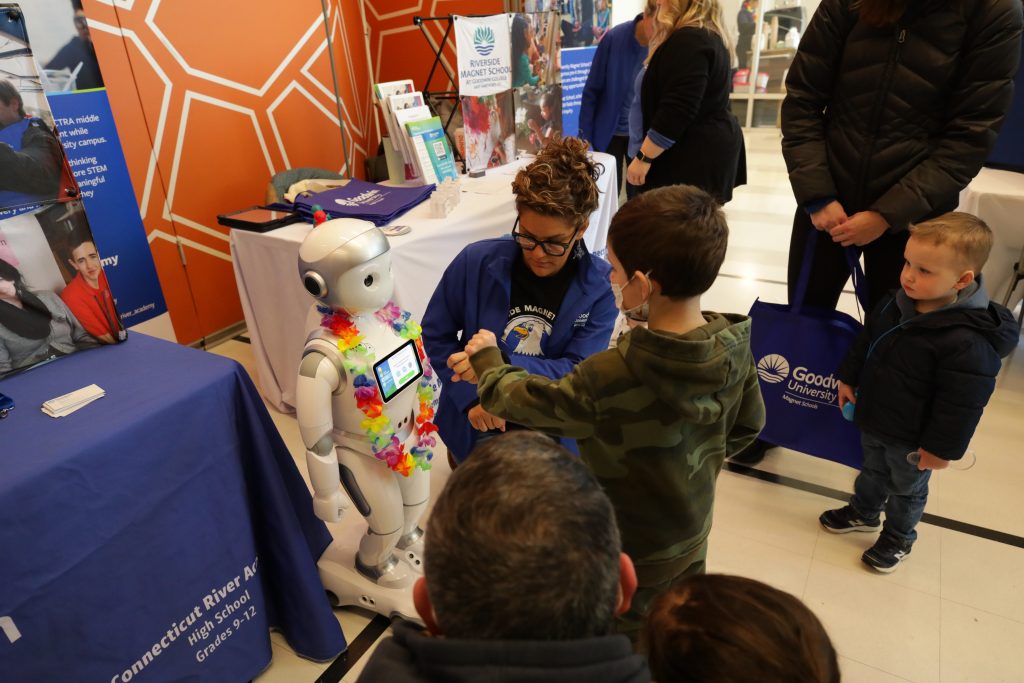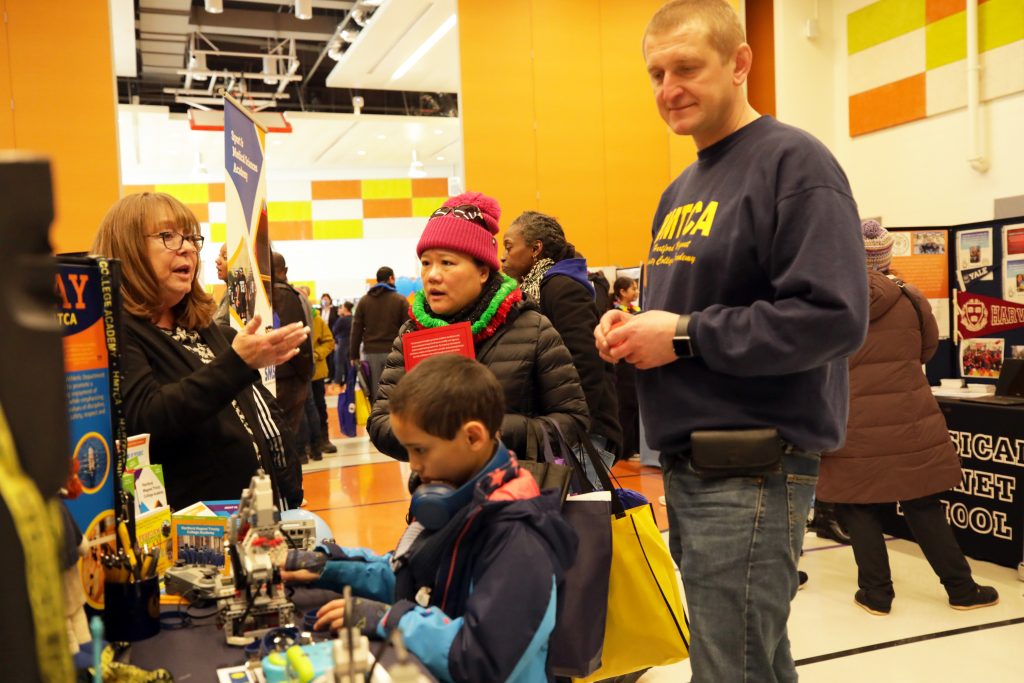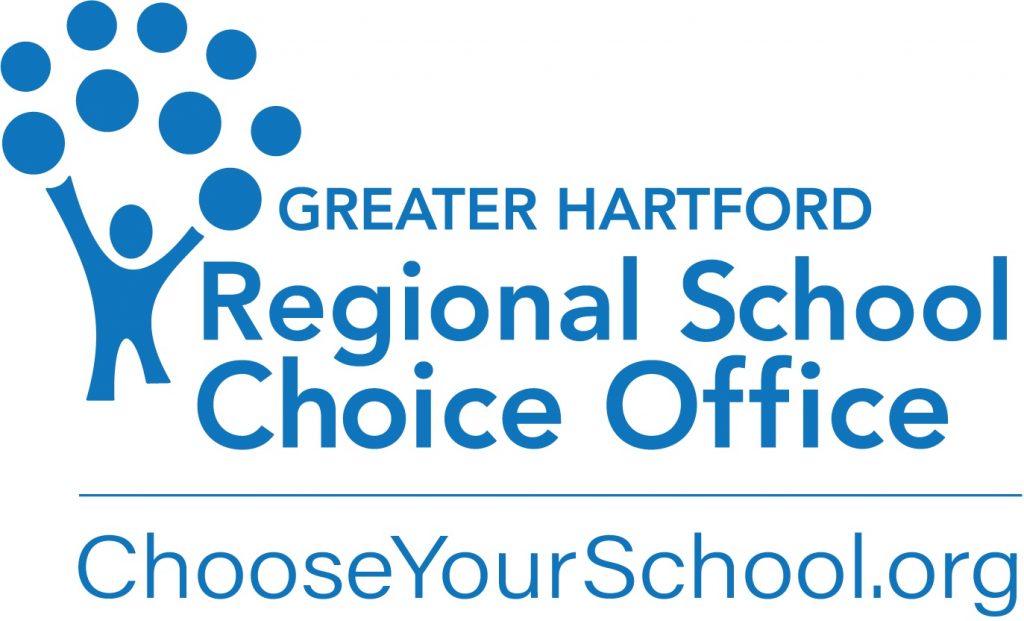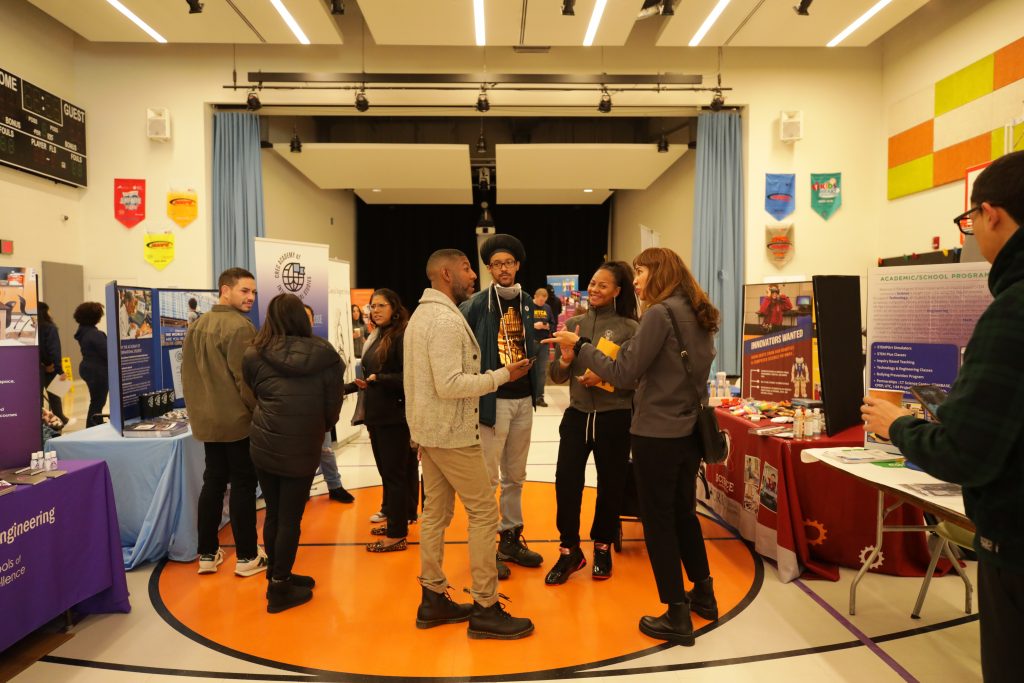By Ariana Rawls Fine
“When the Connecticut State Department of Education’s (CSDE) Regional School Choice Office (RSCO) conducted market research about what families know about school choice in the state and the Greater Hartford area, it found that nearly 60 percent of those families were not aware that they have public school opportunities outside of their home district available to them for no cost,” said CSDE Regional School Choice Director Robin Cecere. “Many Connecticut residents have options about where their children attend school and RSCO’s goal is to make sure they know about them so they can make an informed choice.”
“School choice is exactly what it sounds like: an opportunity for families to choose a school based on their child’s interests, passions and skill areas to better align with a student’s needs and foster a love of learning,” continued Cecere. RSCO was created to foster the growth of school choice in the Greater Hartford region and acts as a “one-stop-shop” for families to discover and apply to schools. We want families to know about these public-school options so they can find the best fit for their children.”

RSCO offers students entering pre-kindergarten through grade 12 an opportunity to apply to a range of school choices through a single application. In the Greater Hartford region, there are three primary programs under RSCO: 43 magnet schools, which cover multiple districts and incorporate specialized themes; three Connecticut technical education and career system (CTECS) high schools; and the Open Choice program, which allows Hartford students to attend school in 27 participating high-performing suburban districts, and non-Hartford students to attend three Hartford schools with specialized programming.
“It’s important for children to be in diverse learning environments because their eyes are opened to different opportunities, different cultures and different backgrounds of families,” said Mary Valera, assistant principal for the Betances Learning Lab and a parent to a pre-K3 student. “Choice is important for parents because every parent and every family has a different need and different want and different opportunity they’re looking for in a school.”
Like other regions in Connecticut, the interdistrict magnet schools in the Greater Hartford area that participate in the RSCO program offer learning environments with special themes and programming, including themes like science, technology, reading, engineering, arts and math (STREAM); visual and performing arts; and International Baccalaureate. These schools provide the core curriculum but incorporate the specific theme into the curriculum and electives to fuel students’ interests and set them up for success. Some of the other theme options include dual language programs with immersive bilingual learning in English and Spanish, a college and career readiness program with a college modeling environment, a global studies and world travel track with rigorous academics and intercultural learning, Montessori-themed learning and Reggio Emilia teaching methods in schools, and many more. The themed schools tend to have smaller class sizes and higher teacher-to-student ratios.

“Connecticut River Academy really introduced me to a lot of diversity and really shaped me into the person I am today by giving me different exposures to different cultural backgrounds and making relationships with people,” stated Cameron Davis, who graduated Connecticut River Academy in 2017.
Some innovative science, technology, engineering and mathematics (STEM) school themes include a computer science and engineering track, where students focus on coding, website and application design, and game development, as well as a sport and medical science theme to prepare students for sports medicine, exercise science and health management studies. For 12th-grade students, STEM options include a dual enrollment advanced manufacturing program, where students are taught skills and training for a career in the advanced manufacturing field with state-of-the art technology equipment, while earning college credit.
And the options are even more honed on specialized interests with museum studies and social justice programs. With one option, a MicroSociety school, students are prepared for the larger world by being an active part of the school’s decision-making through student government and academic involvement.
Along with attending magnet schools, students have the opportunity to choose a school option other than their local district school through the Open Choice Program. This program provides opportunity for Hartford resident students to attend school in suburban school districts and access challenging academics and enriching extracurricular options, while extending the reach of the student’s experiences to include both the student’s home community and the school community. Non-Hartford residents may also participate in the Open Choice program by attending select Hartford schools with specialized programming.
In addition, CTECS melds trade education and academics for high school students. In addition to graduating with a high school diploma, students can receive a trade certificate as well as earn college credit and work experience during high school. Other high school options include agricultural science and technology education schools (ASTE) with a focus on animal science; aquaculture; biotechnology; food, environmental and plant sciences; marine technology; agricultural mechanics technology; and agriculture business.
RSCO is constantly expanding opportunities. They are introducing three new magnets for the 2023-2024 school year: a dual language program with students fully bilingual in English and Spanish by eighth grade; a new PREP preschool program with direct pathways to associated magnet schools; and an advanced manufacturing program for 12th-grade students. Two additional magnets will be built in the next two years, including a tech-focused high school operated by Goodwin University.

As part of the online application process, first-round placement notifications for the 2023-2024 school year were sent out in early April. While the regular online application deadline has passed, there is still plenty of time to apply during the late application period ending September 15. Families will be notified of placement offers as seats become available during the spring and summer months. RSCO supports applications and hosts informational events around the area throughout the late application period, including a spring fair on May 6 in East Hartford.
RSCO has created a centralized online application that is easy to use, family-friendly with video and simple instructions, and built around information to make informed choices, stated Cecere. With a new feature, families can view real-time waitlists for the schools of their choice. It enables families who didn’t receive an offer in the first round of placements to adjust their students’ school preferences and add school selections based on that information to increase the likelihood of receiving a placement, and gives families applying during the late application period more information upfront.
Other school choice offices across the state cover other Connecticut metro areas and their surrounding districts but are not operated by the state. The State Department of Education website provides information about choice options outside of the Hartford Region (portal.ct.gov/sde/school-choice/connecticut-school-choice).
RSCO is holding its Spring School Choice Fair on May 6 from 10 a.m.-1:30 p.m. at the Connecticut River Academy in East Hartford for those who are interested in getting more information in person. Visit ChooseYourSchool.org for more information.







More Stories
Autism Families CONNECTicut Steps Up for the Local Community Building a Nonprofit From the Ground Up
Hospital for Special Care’s Ivan Lendl Adaptive Sports Camp
Special Olympics Connecticut: Supporting and Inspiring a Special Community